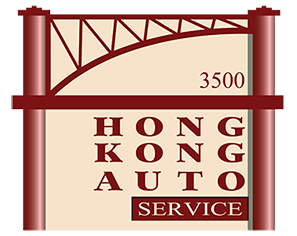Stretch your dollar with an extended warranty
Many carmakers’ warranties nowadays are designed for the long haul. But what if you’ve got your sights set on an even longer haul?
Today’s new car warranties tend to fall into 3-year/36,000-mile, 4-year/50,000-mile or 5-year/60,000-mile versions, although there are some that are even longer. These warranties were fine during the trade-in-often days of better economic times, but the average vehicle age currently is hovering around 10 years.
With people holding onto their vehicles longer and witnessing that odometer exceed the 100,000-mile mark, it makes sense for many drivers to invest in an extended warranty, which picks up where a factory warranty leaves off. Certain policies offer coverage up to 100,000 miles, while others offer protection beyond even that number.

Extended warranties can be cost-effective ways to keep that car running right, provided you choose the right auto-service facility.
Like any type of “insurance,” an extended warranty has pros and cons, many of which depend largely on the warranty company, as well as the individual circumstances and the future plans of each driver.
Save $$$
At Hong Kong Auto Service, where we process claims with 99% of the extended warranty companies, we’ve found service contracts not only save drivers thousands of dollars, but they can provide peace of mind. Still, many consumer advocates advise against purchasing an extended warranty. This might be because getting your money’s worth from such warranties relies on the level of auto service you seek.
For example, the quick lube shops are focused on fast oil change turnaround while adding a new air filter or possibly a fluid flush to your bill. They’re not geared toward top-notch inspections—like Hong Kong Auto Service—that can uncover needed repairs covered by an extended warranty. Plus, we know from experience which components your warranty covers and which ones you’ll need to pay for out-of-pocket.
A full service facility, such as Hong Kong Auto Service, handles all aspects of your claim. We contact the warranty company and obtain approval for the repair. Customers don’t have to be involved in this process and certainly aren’t asked to pay upfront for covered repairs. Once a warranty provider gives a repair the thumbs-up, they work with us directly.
Of course, if you seek service from an outfit that doesn’t routinely inspect vehicles for needed repairs or handle warranty claims for its customers, then those consumer advocates just might be right about extended warranties being a waste of money.
Picking a policy
Those who believe an extended warranty is the right choice have some decisions to make when picking the policy that’s best for them.
- Conduct some research on the underwriting companies you’re considering. Are they reputable organizations or new to the field? Not every provider is on fantastic financial footing, and some consumers have been stranded without coverage even after paying for it.
 Would you buy an extended warranty from this guy?
Would you buy an extended warranty from this guy?- You don’t need to purchase a service contract when purchasing a vehicle, since the car will be covered by a factory warranty. You’re under no obligation to purchase a plan offered by the car dealership.
- The best time to purchase a policy is typically before that factory warranty expires. This enables the vehicle to qualify for a “new car” policy, which provides better protection at a better price than “used car” coverage. Speaking of getting more bang for your buck, select a warranty with “exclusionary” coverage, which is the most common policy type. It covers all components except a few exceptions. By contrast, non-exclusionary coverage specifies components that are covered; a failed part that isn’t listed will cost you.
- Purchase a policy permitting the holder to select the repair facility. Some policies require buyers to return the selling dealership. This type of stipulation is easily avoided by not purchasing a warranty through a dealership. Also, seek a policy that doesn’t cap labor costs or at least pays a minimum of $100 per hour, which is in keeping with Chicago-area rates.
- Avoid policies that charge a deductible per procedure. Instead, purchase a policy that charges one deductible per claim. For example, if you have a $50 deductible per claim and you’re addressing three warranty repairs in one service visit, you’ll pay a $50 deductible. If your deductible is charged per procedure, you’ll wind up doling out $150 for the same three repairs.
- Be aware that extended warranties won’t cover all repair costs in all situations. Diagnostic procedures are not always covered and rarely are covered entirely. A warranty company will cover the labor and parts for replacing a wheel bearing, but might not cover the time required to diagnose the condition.
So, if your sights are set on a longer haul than the automaker had in mind, consider the merits of an extended warranty.
